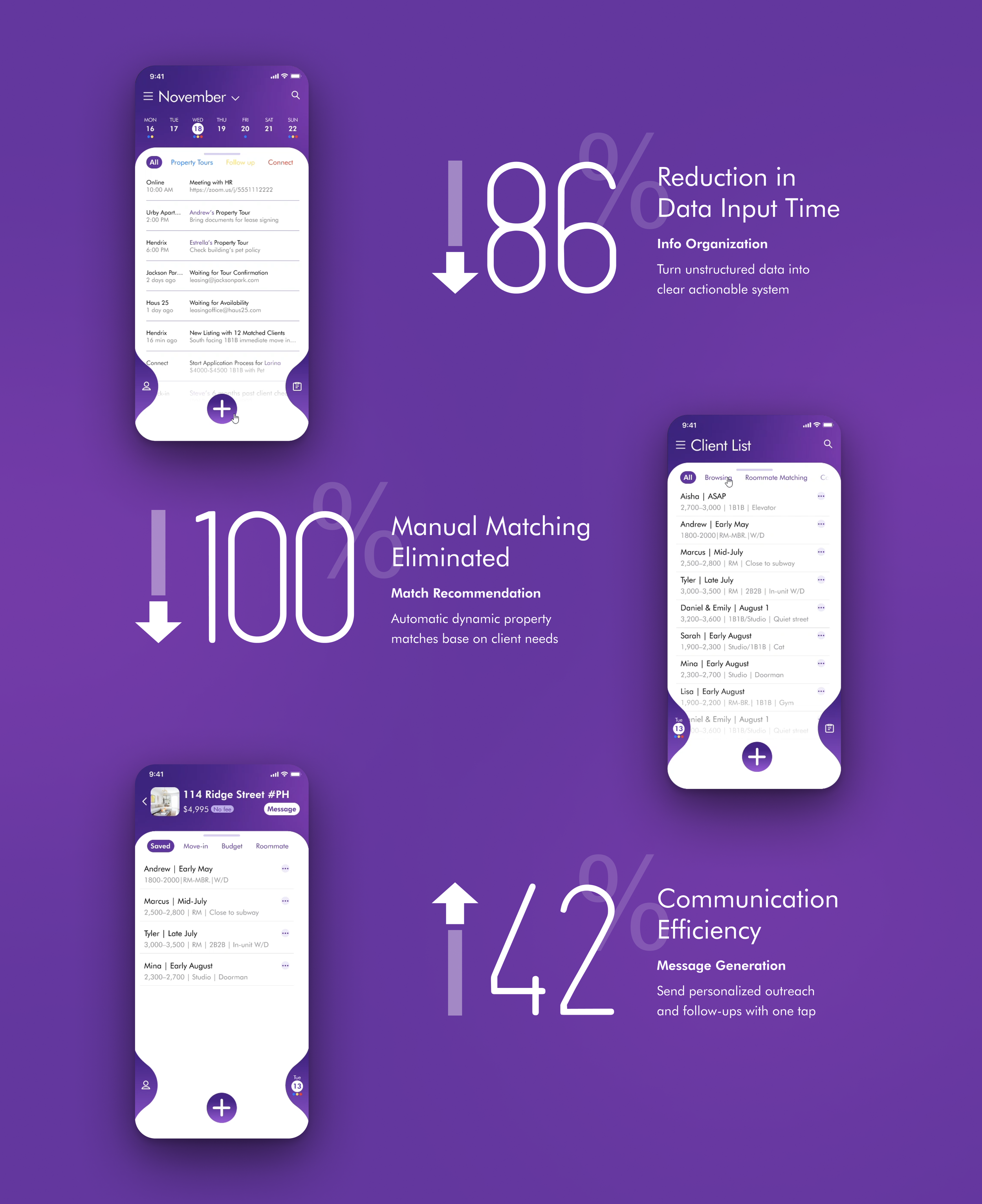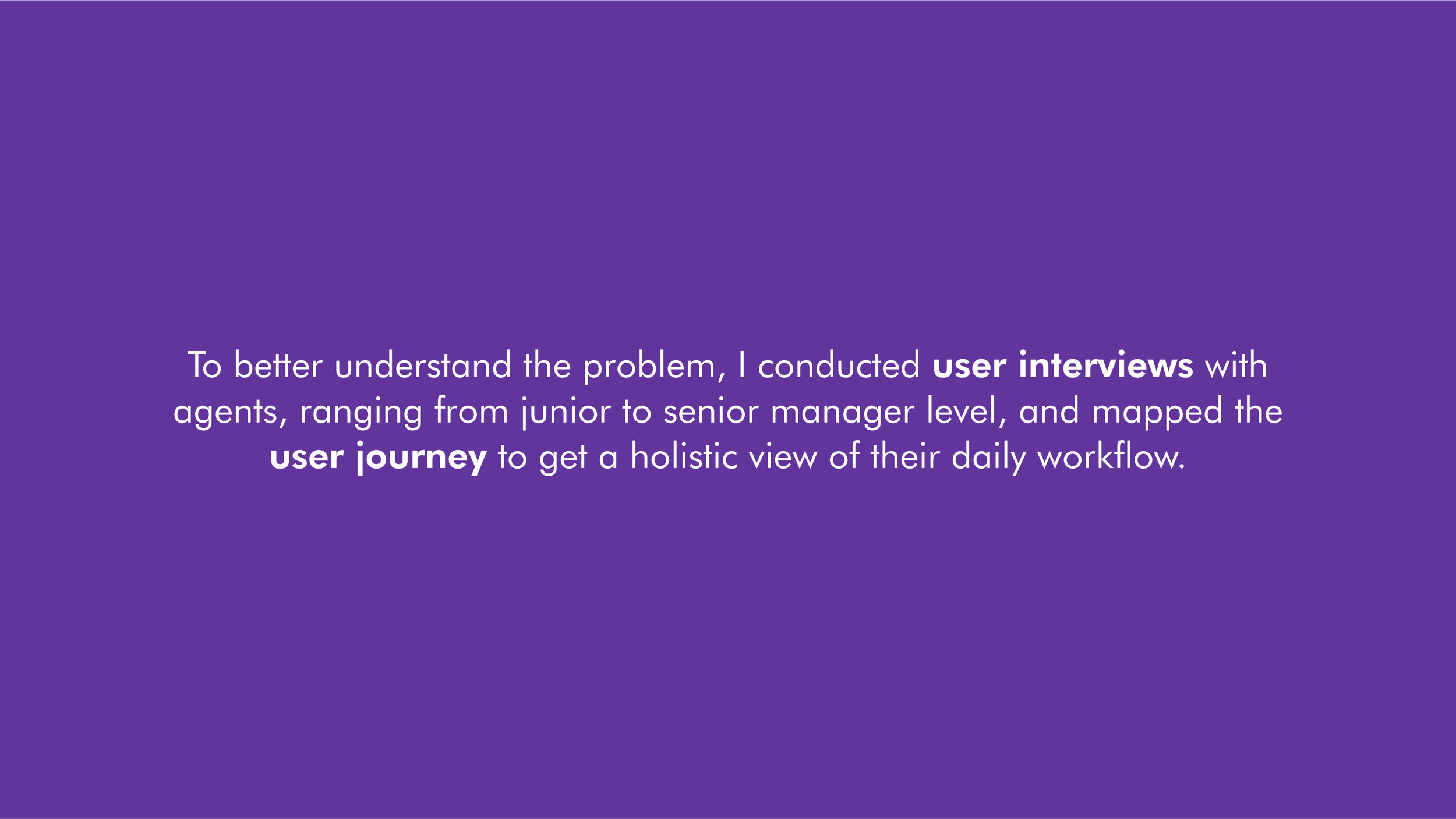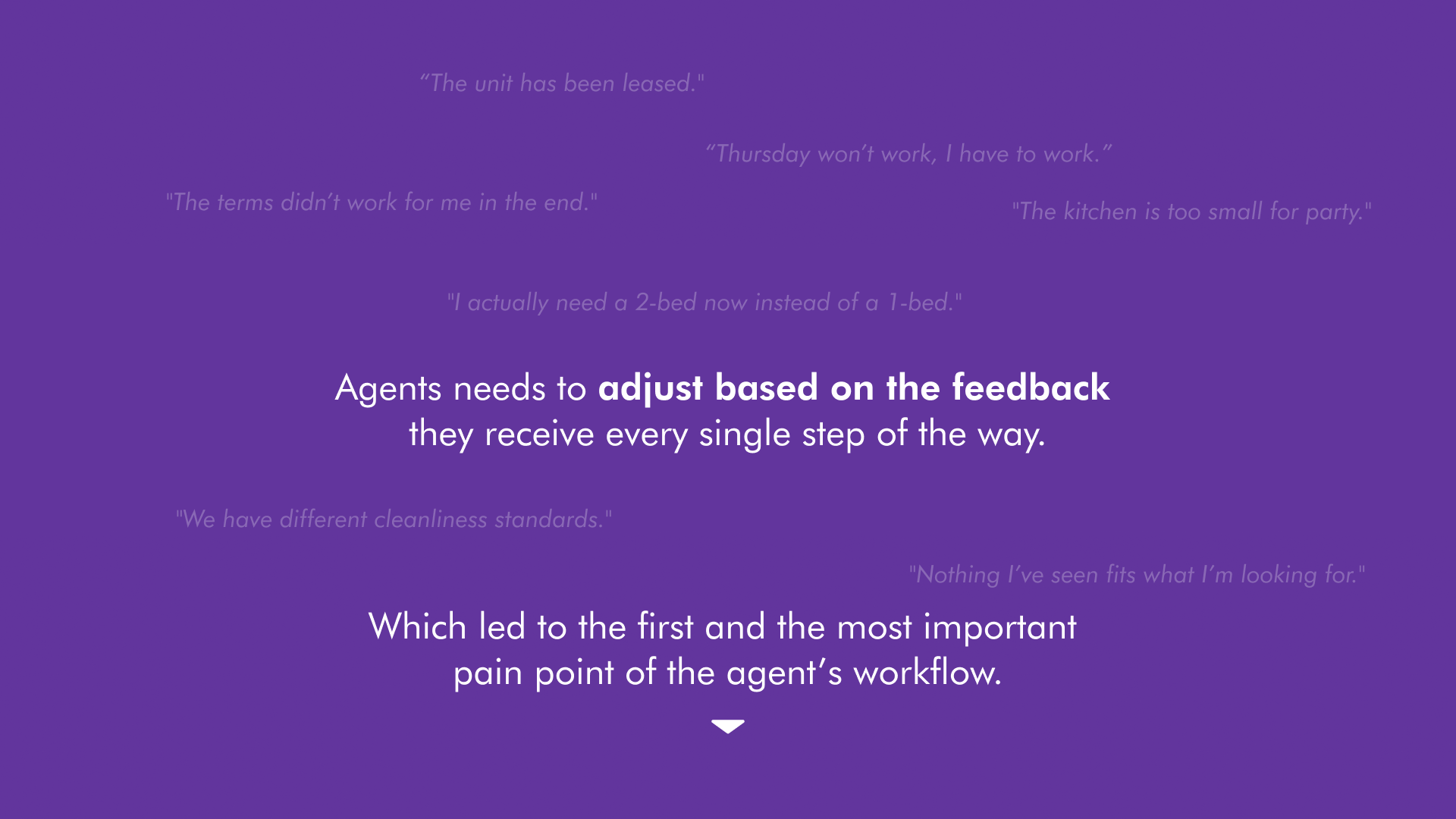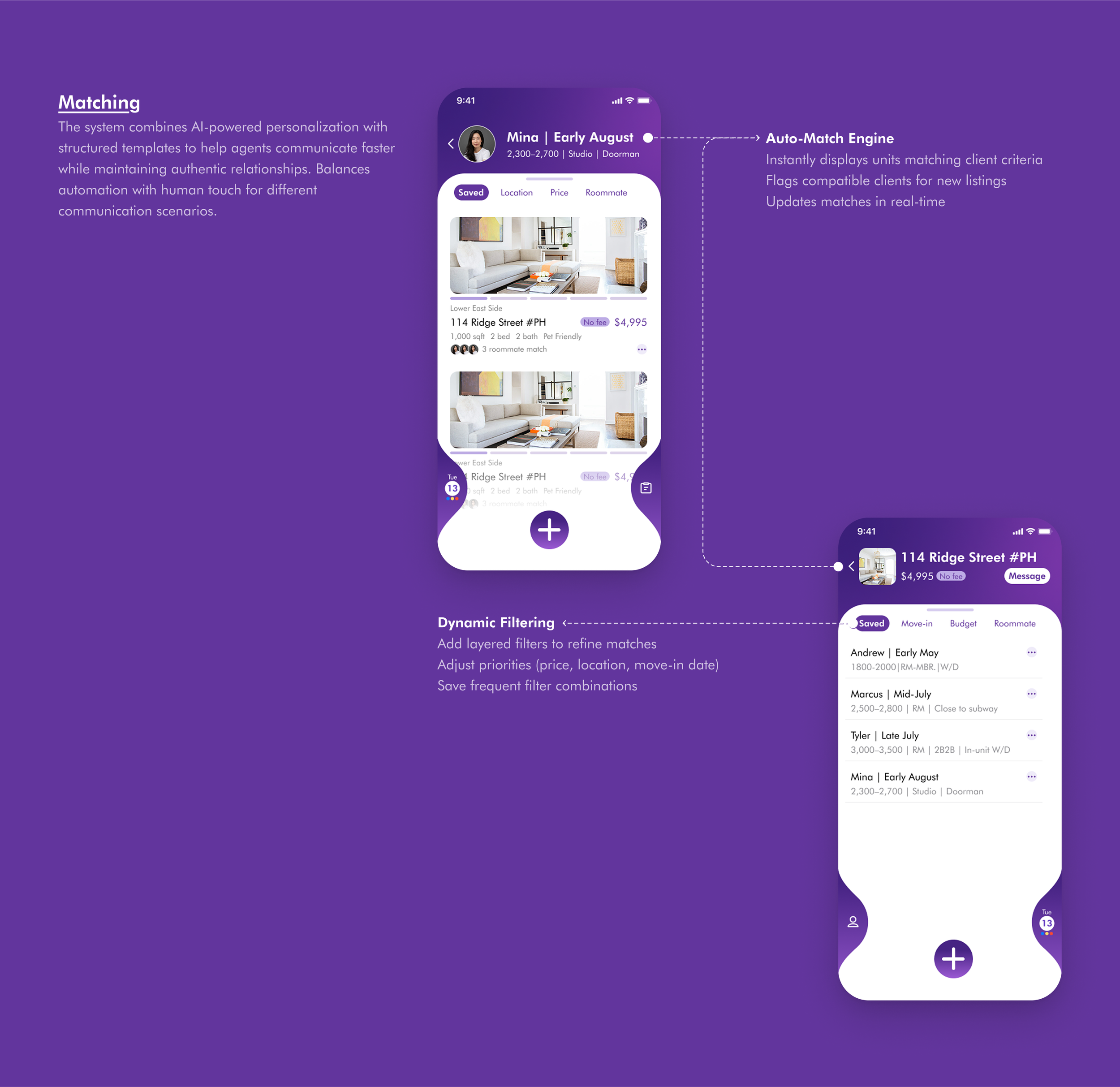Project Statement
This project aims to explore the workflows, challenges, and strategies of rental agents in the U.S. apartment rental market, an almost $300 billion industry.
Through research, the findings informed strategies to enhance efficiency, improve customer experiences, and drive innovation in the rental industry.
Research Questions
I guided my research with the following questions
How do rental agents establish and maintain communication with rental buildings and clients?
What tools, strategies, and processes do rental agents use to match clients with rental units?
What challenges do rental agents face in securing rental units and closing deals?
User Research
I started with asking the agents to list out all task they do at work and pick out tasks that they spent the most time or struggle the most.
Journey Map
With that priority in mind, I asked the agents to walk me through a complete process of closing a deal, and then synthesized the information into a journey map
Agents are less worried about finding clients and more concerned about handling high-volume inquiries in the competitive, fast-paced market.
"Finding clients is easy, they will come to you. My inbox gets flooded with inquiries during peak season - but by the time I respond, half have already signed with faster agents. The competition is brutal!"
--Vince
To my surprise, none of the agents that I interviewed expressed concern about difficulty in getting potential clients. It's a huge market with stable needs, especially during the peak season. Instead, the volume of inquiries, extremely fast pace, and highly competitive market are the main concerns I heard across all levels.
The agent process involves client onboarding, property matching, tours, lease signing, and commissions, with flexibility in steps like roommate matching, though real-world execution is often nonlinear.
Interview Insights
#1 Manual Info Processing
Agents spend excessive time sifting through information, waste hours organizing it across platforms.
"I waste hours every week digging through emails, texts, and sticky notes just to piece together basic client details. By the time I find what I need, the opportunity's already gone."
--Vince
They drown in unstructured data, client preferences, listing details, and commission terms are scattered across notes, emails, and memory. Without a centralized system, they waste time cross-referencing details and risk missing matches.
#2 Rapid Decision Making
Agents struggle to track follow-ups, client preferences, and property matches, and peak-season urgency exacerbates tracking gaps.
#3 Repetitive Communication
Agents waste time drafting near-identical messages, diverting energy from high-value work.
"I had three perfect listings for a client last week, but with 20 other clients to track, I forgot to follow up. By the time I circled back, all the units were gone - now they're working with another agent."
--Rita Lin
Timing is everything. During peak season, every minute counts. However, agents are forced to juggle too many clients and lack real-time visibility into ideal client-listing pairs. Manual tracking leads to missed follow-ups, and peak-season chaos exacerbates the problem. It results in clients losing perfect units, and agents lose trust.
"I must have typed 'great natural light and pet-friendly' a hundred times this week and I accidentally sent that intro to a client allergic to cats."
--Yinhua Zhu
Much of the communication of the agents is repetitive. It consumes hours and slows down the process. This highly repetitive work led to a higher chance of errors.
Reframing the Problem
Success in leasing depends on seamless coordination, yet current tools force agents to juggle fragmented systems and manual workarounds.
After analyzing the insights, it became clear that the main focus should be on redesigning their workflow to eliminate friction in information management, timing, and communication.











